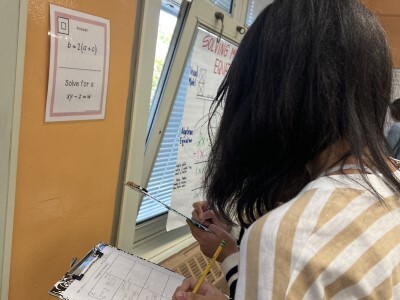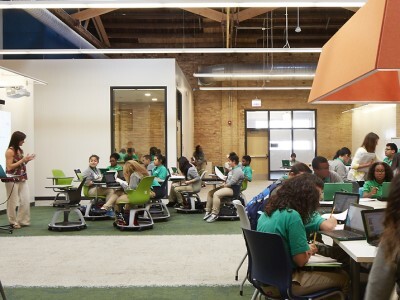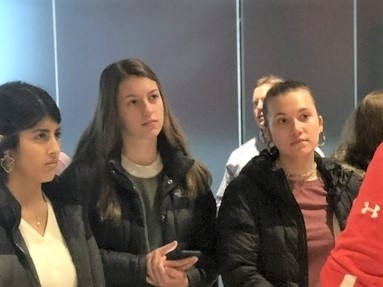Benefits of Self-Pacing in Skills-Based, Hands-On Classes
Topics
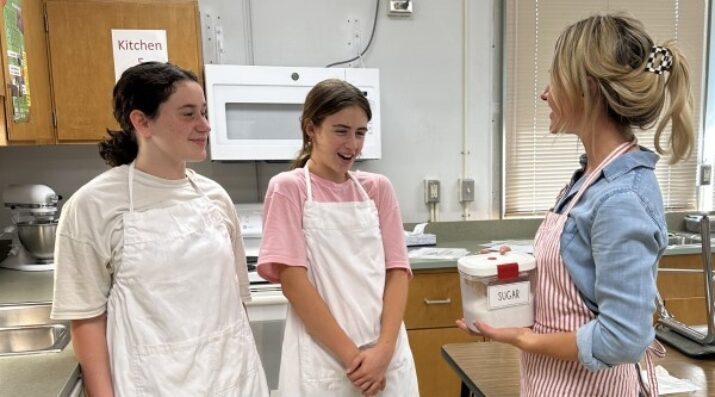
We’ve all had the experience of truly purposeful, authentic learning and know how valuable it is. Educators are taking the best of what we know about learning, student support, effective instruction, and interpersonal skill-building to completely reimagine schools so that students experience that kind of purposeful learning all day, every day.
These six benefits to self-pacing in hands-on learning found in a family and consumer sciences course can also happen in CTE, project-based academic courses, and other hands-on learning opportunities.
Class began fifteen minutes ago before you opened up the door to my classroom. Soft soothing jazz is playing quietly. A group of 20 middle schoolers are in their third week of their Family and Consumer Science half-year course.
Four students are working together trying to solve a kitchen safety search-and-find at a table. One student is listening to an instructional video in a singular desk stationed by the window. At the front of the classroom, two students sit down at desks facing each other with folders to shield their work allowing for privacy while they complete a mini-assessment known as a mastery check.
You spot me, the teacher in this self-paced classroom, at the front of the room at the teacher station grading student work and offering instant feedback. Students come up to me at the teacher station to hand in their work, ask questions, or receive additional instruction as needed. Another student, the teacher helper, is handing out work and updating a public tracker, a digital grading system of sorts giving students the indication if they have mastered their work or not. Every student is working.
Every student has their own checklist to complete at their own pace, with the teacher at their disposal. After a few weeks reviewing the foundational skills like we’re doing today, you’ll see us head to the kitchens to begin our first lab.
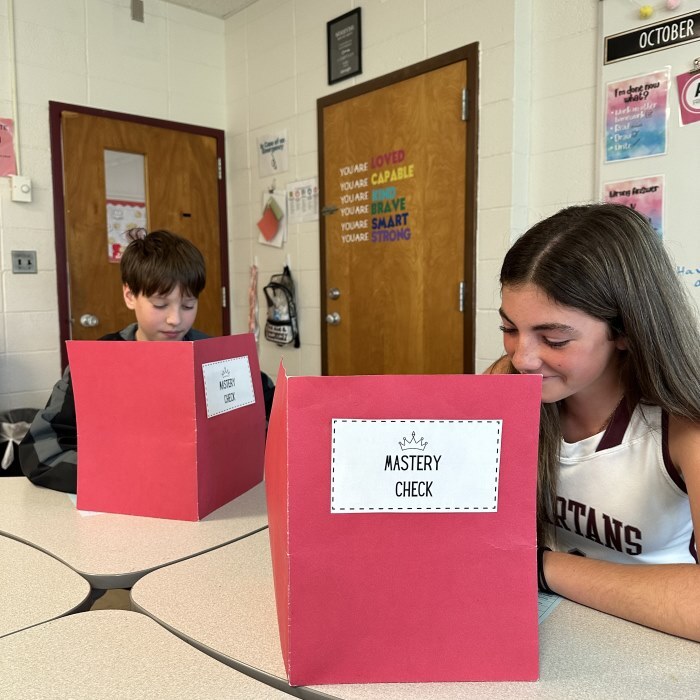
After teaching family and consumer sciences for nearly 12 years, I’ve found the key to supporting students as they prepare for hands-on learning. In a classroom where students are not sitting down at a desk but cooking in a kitchen, it’s absolutely vital that students know what they are expected to do. The structure of my class is as follows:
- Students complete a checklist containing instructional videos and assignments
- Students complete mastery checks or miniature-sized assessments
- Students demonstrate their knowledge with a hands-on foods lab.
Although the structure requires me to frontload a great deal of prep, the rewards are plentiful. Time with students on a one-on-one level rather than a less intimate one-size-fits-all lecture is much better for both the teacher and students. Don’t just take my word for it, my students have reflected on their work and have said “I wish all my classes were self-paced” and “I’m actually learning in this class!”
Whether hands-on learning happens in family and consumer sciences like my course or in career and technical education (CTE) or project-based academic courses, here are some of the benefits of self-pacing in hands-on classes I’ve seen.
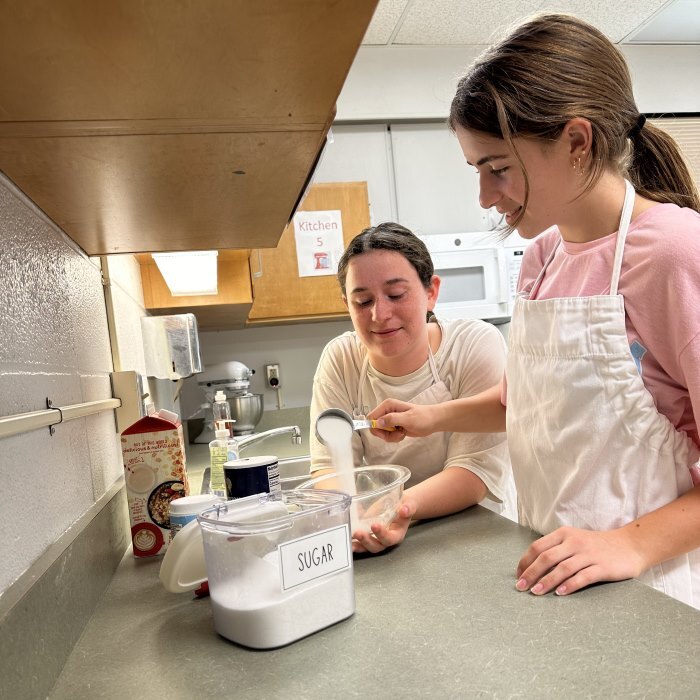
Learn, Master, and Move On
Students learn through instructional videos then are expected to complete assignments or worksheets to showcase their learning. For those who need more time reviewing the content, they are able to spend more time learning the skill(s). Students can rewatch videos, collaborate with a peer who has mastered the content, or check with the teacher to relearn or perhaps have the content modified for them. Next, they complete a mastery check. The mastery check is like a small quiz with questions that relate to the objective. They complete the mastery checks independently using the knowledge learned from the self-paced lesson. Students must receive the full 100 percent in order to receive mastery then subsequently move on to the next skill.
A New Role for the Teacher
Because time is not spent lecturing, I am able to move around the room and create more support for those who need it. Think of those students who quickly pick up how to use a piece of equipment. Now, think of those students who need another example in order to fully understand. I am more available to differentiate, whether it’s a change in instructional method or just more instruction. I am able to give instant feedback instead of letting grading pile up on the desk for the weekend. I grade most of the work during class, through Google Forms, sometimes with help from the teacher helper. Then I update the public tracker with the results, mastered or revision. This tracker allows students to freely and quietly see if they have been successful or need to revise their work.
More Prepared Students
Have you ever had an experience where some students knew what they were during with equipment, while others had no idea? Have you ever had an issue with safety due to a lack of skill comprehension? In the self-paced/mastery-based classroom, all students have mastered all of the content, knife skills, oven safety, and the like, before they begin the hands-on work. All students are expected to have mastered the foundational “seat-work” before they can move on to the hands-on component. The lab is the next step rather than the first chance to learn a skill.
Teacher Helpers
For the trusted, fast-paced student, self-pacing offers us an opportunity to reward them by becoming the teacher helper. The reason why this job is wonderful is two-fold. First, students love the attention of finishing and then helping out with teacher tasks. Some of these tasks include grading, passing out work, organizing supplies, updating the public tracker, and helping others who need more assistance with the new skills. Second, if you haven’t picked up on this already, they are actually helping me with jobs and tasks to free up my time so I can help others!
A Relaxing Environment
Music is almost always playing in my classroom. I often have a window open for some fresh air, blinds up for sunlight and little artificial lighting. There are no bells in my district which adds to the relaxing atmosphere. Students begin class with a whole class “good morning,” sharing of good news, and reminders of upcoming labs and due dates. Students take out their individual trackers and begin working. There is no yelling to focus on me the teacher, there is no yelling to point students to one assignment. The cues to begin work align with the music. We discuss chatting with tablemates and expectations for the noise level to ensure a quiet and relaxing environment.
Organic Collaboration
In the spirit of discussing the environment, the classroom is setup With tables to support students who enjoy collaboration. When students are confused or need help, they can ask other students questions. They can move around the room as needed and see on the public tracker who else has mastered the content. Peer to peer learning is widely motivational and effective for the students in my self-paced classroom.
All photos courtesy of the author.


